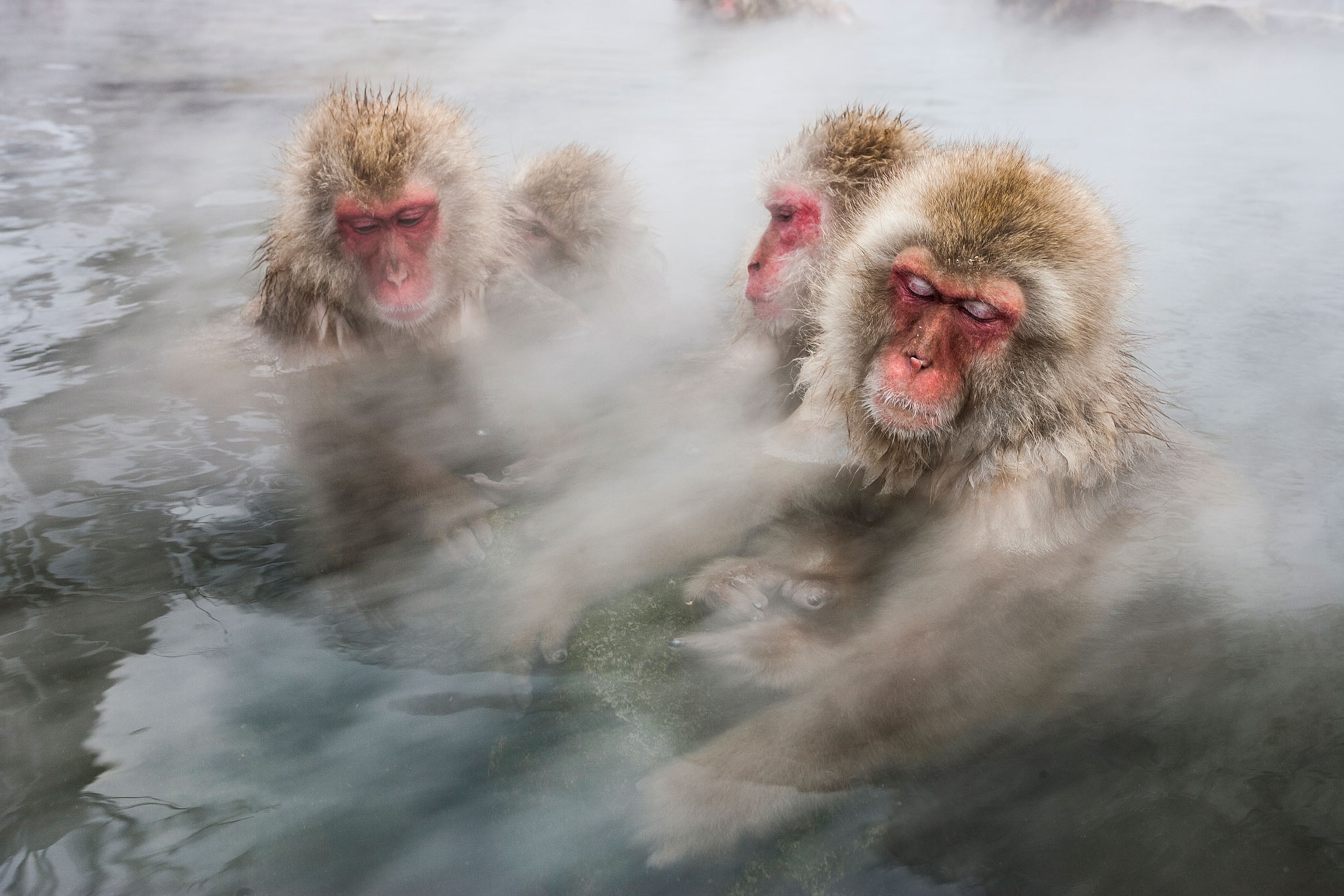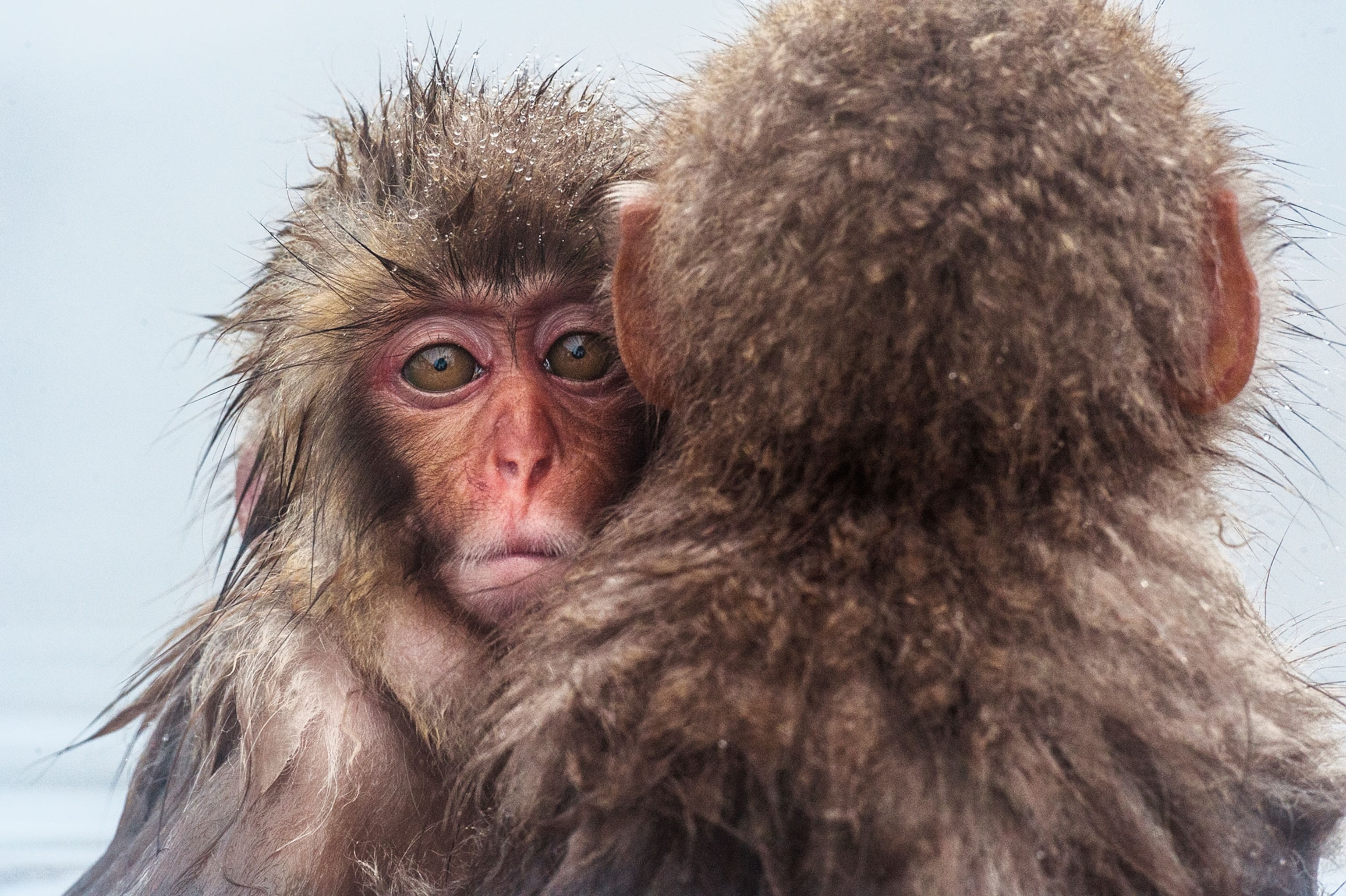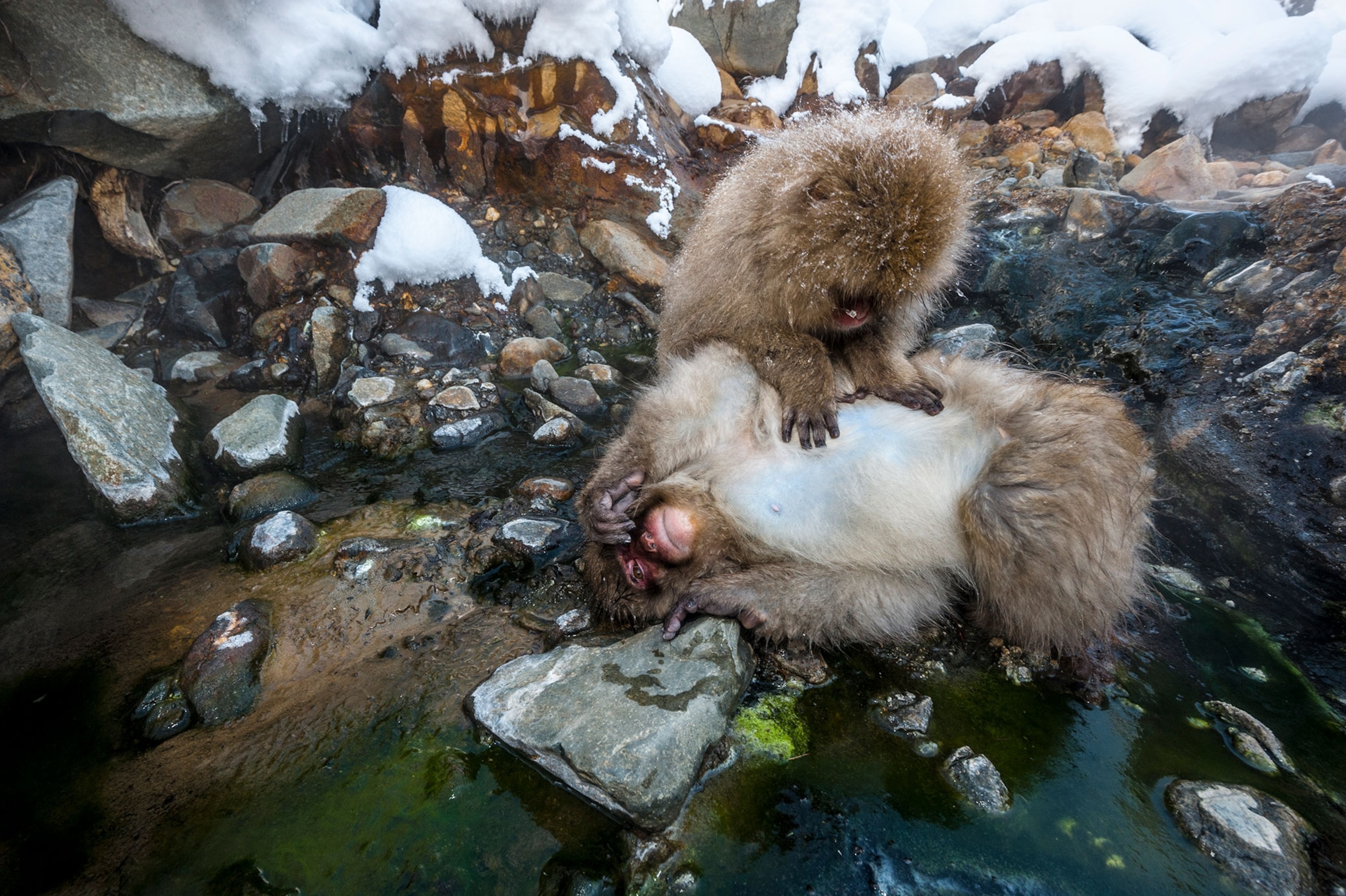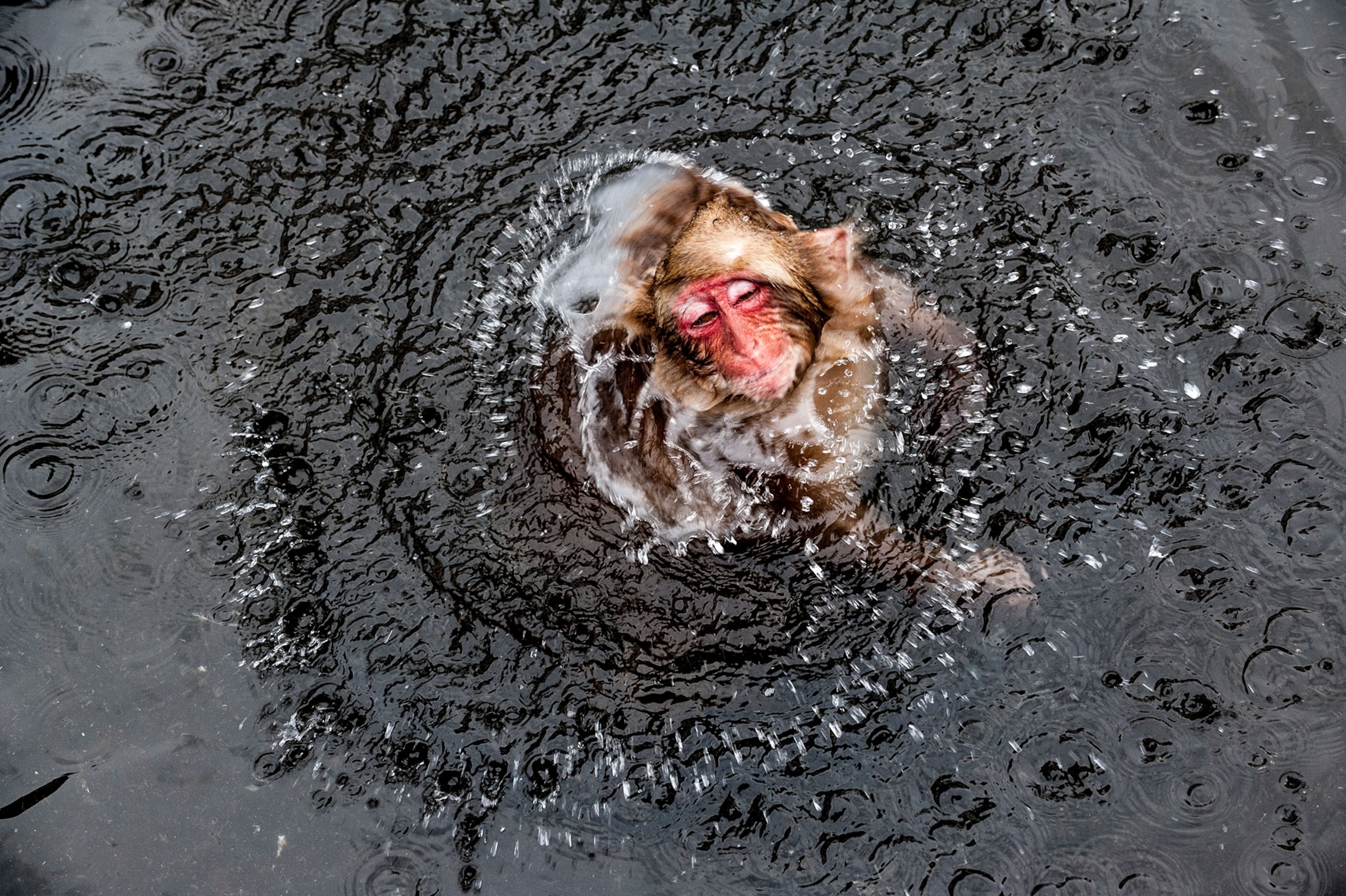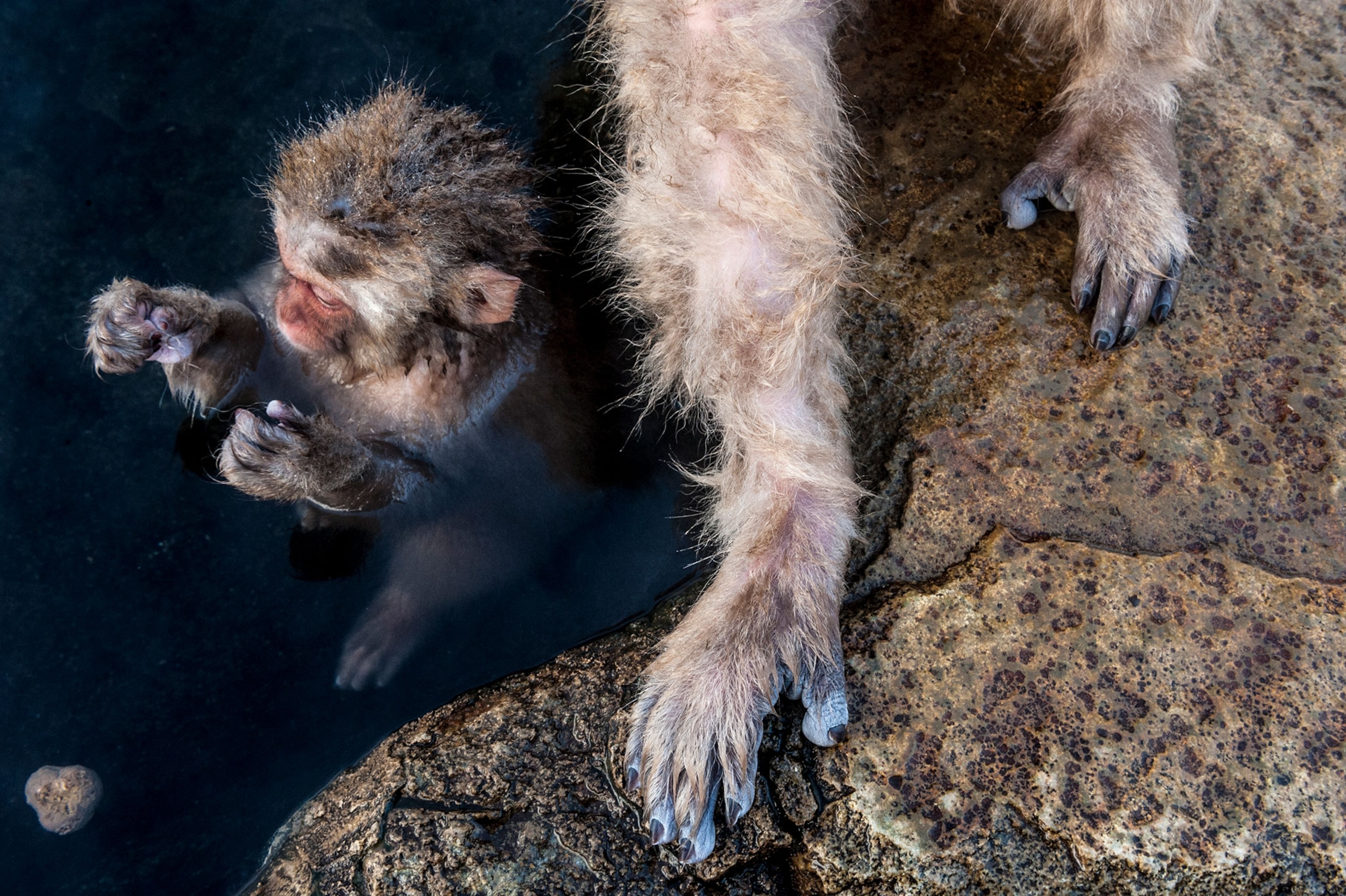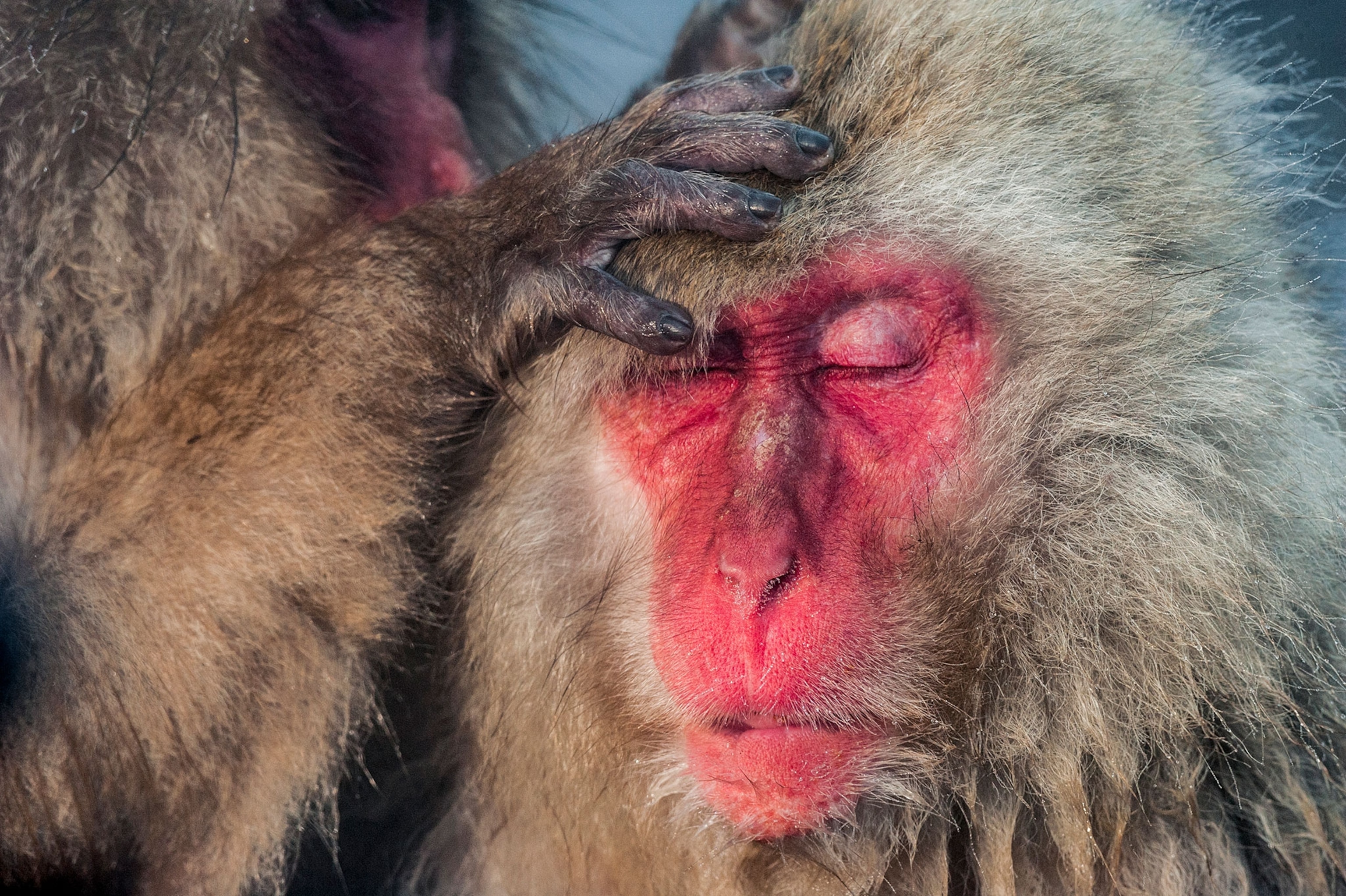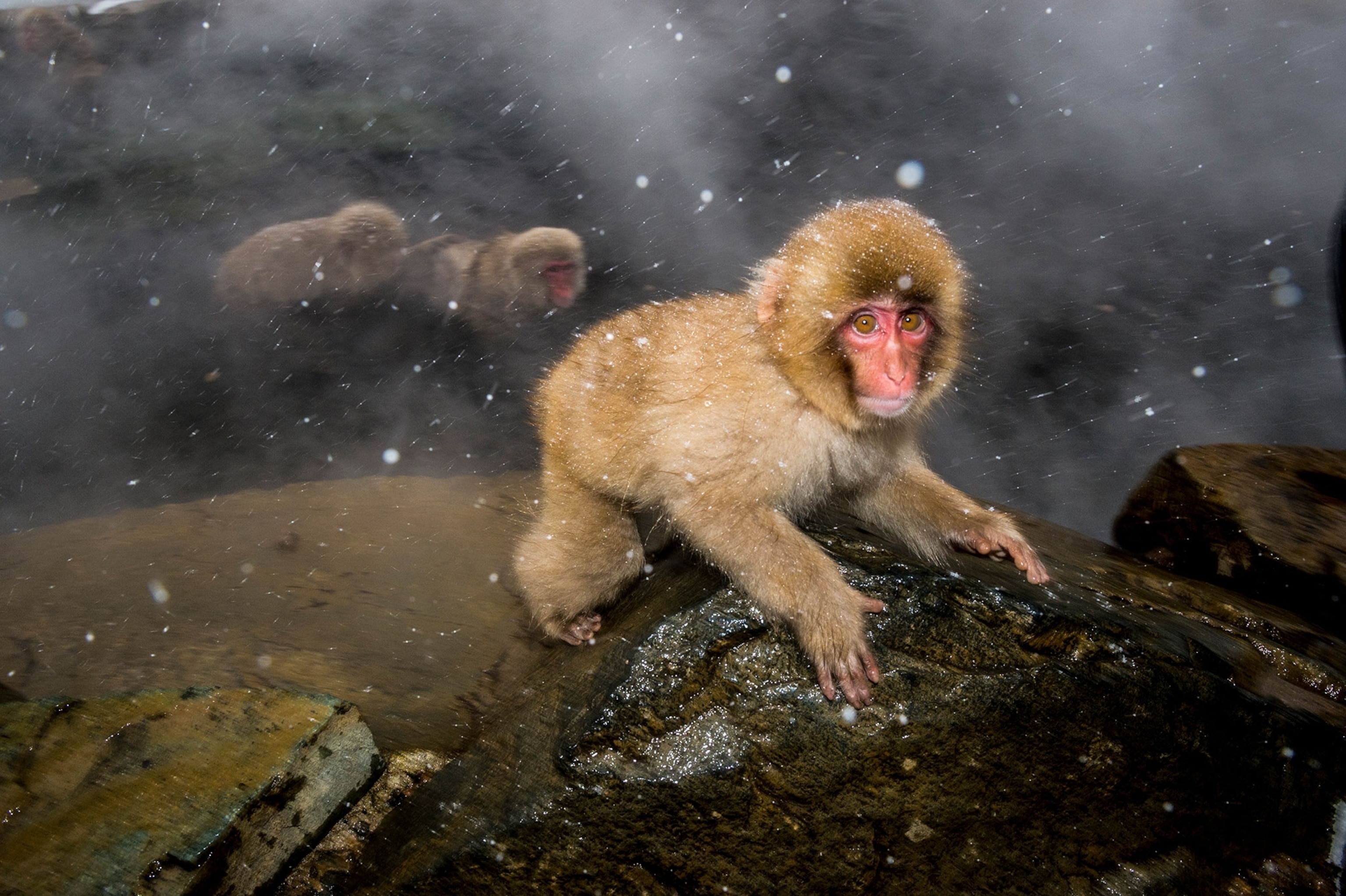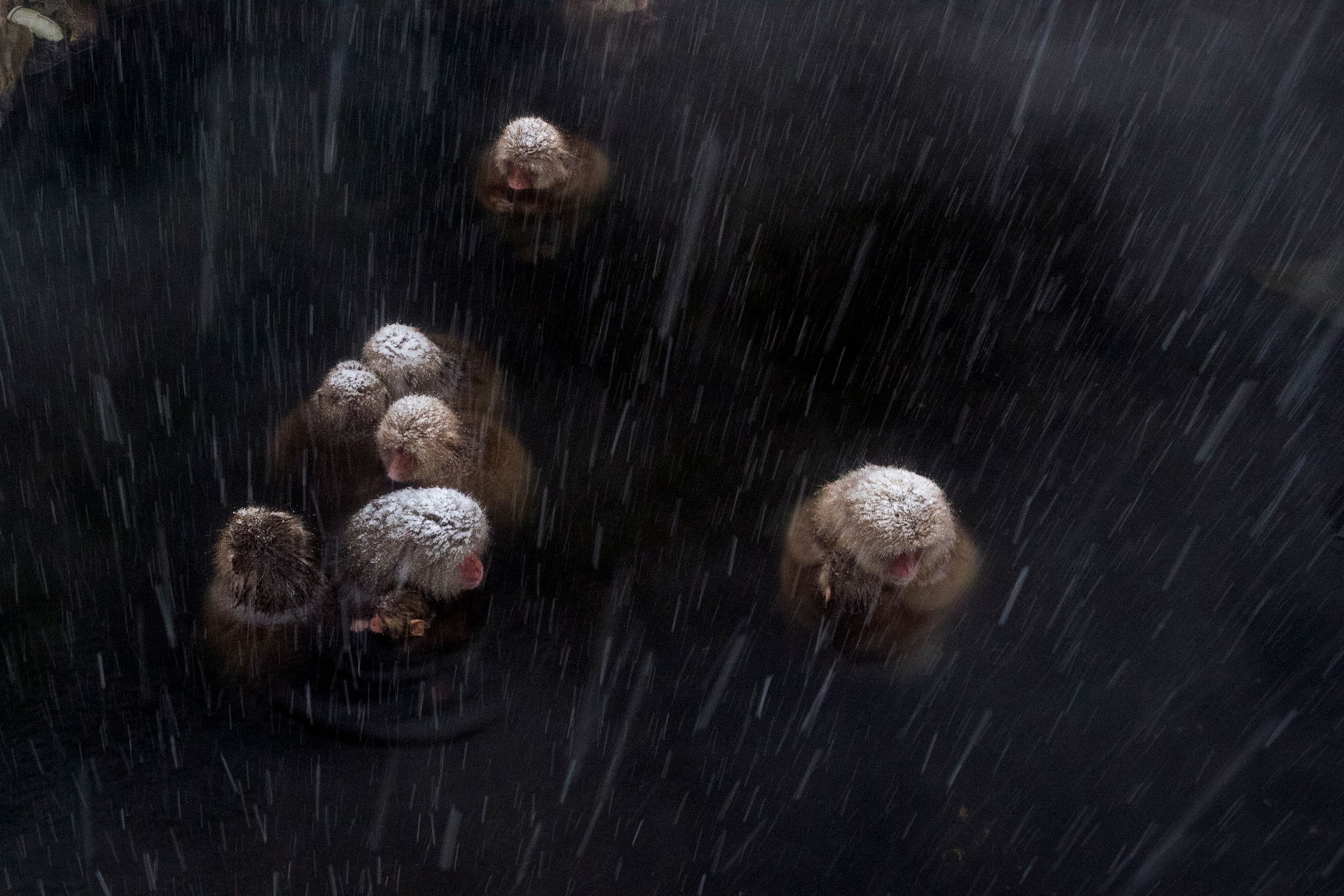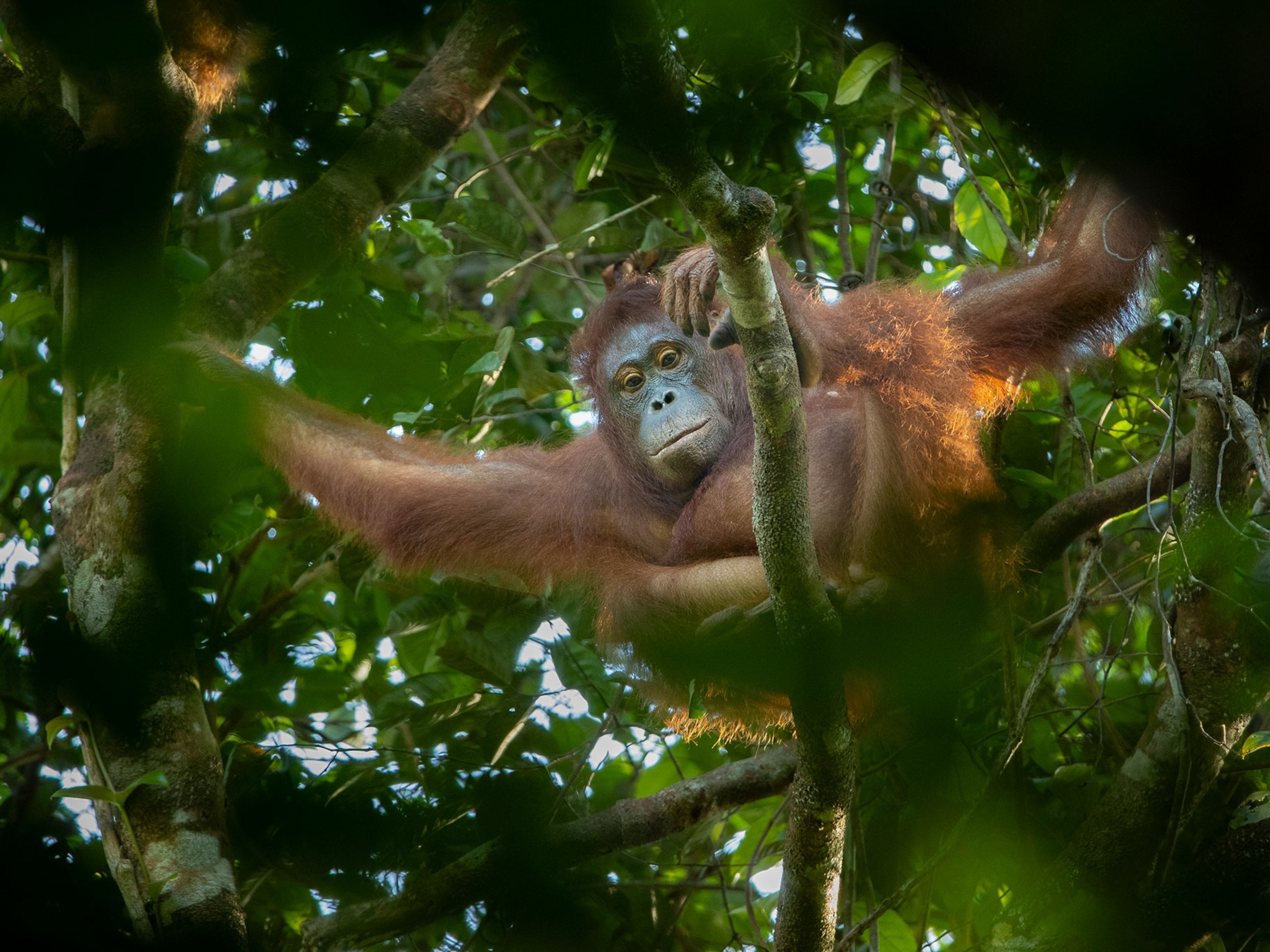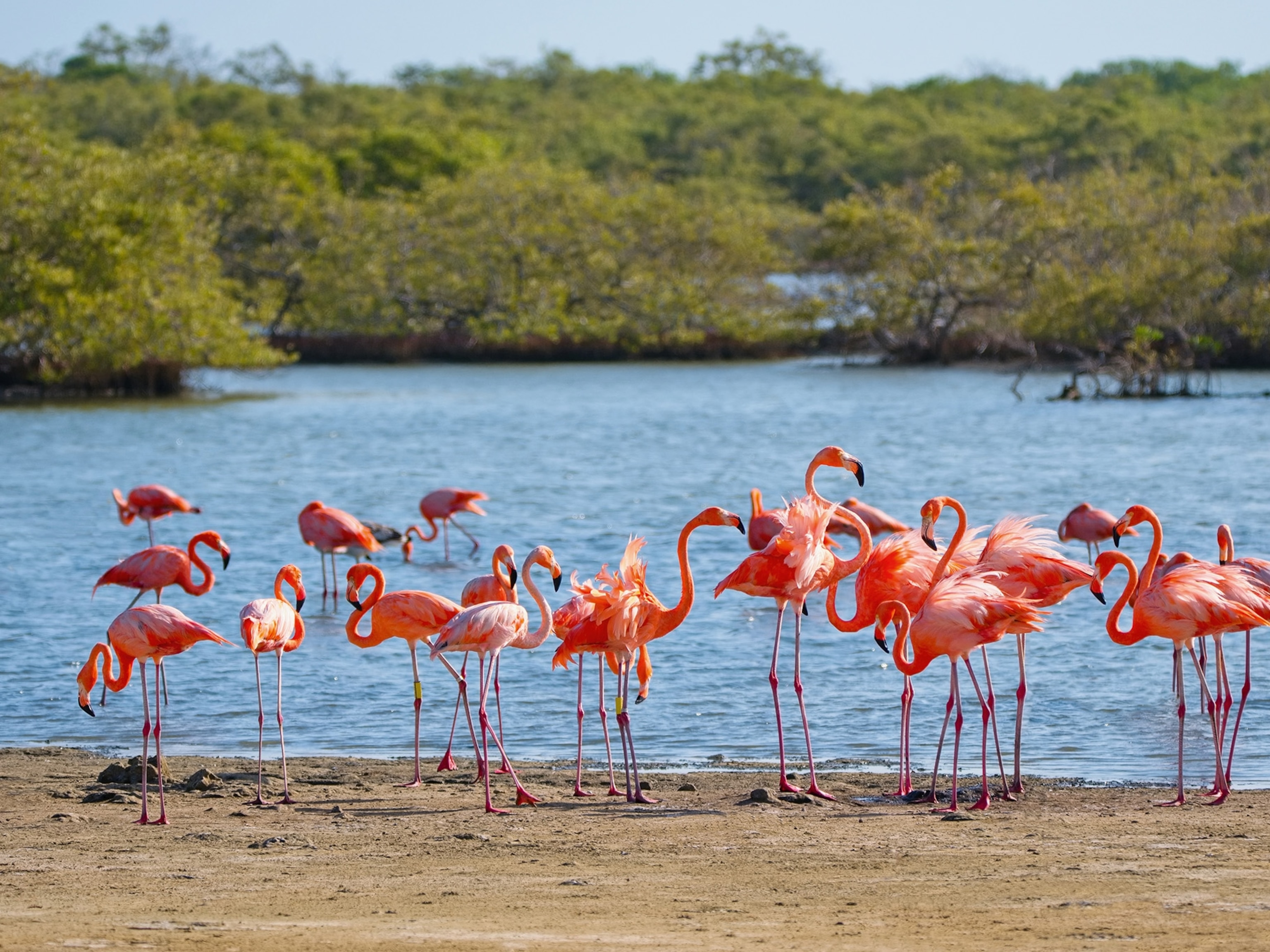
The Soulful World of Snow Monkeys
Visiting the hot springs where Japan's famous macaques hang out, a photographer shows us we have more in common than we think.
It’s easy to find head shots of Japanese macaques soaking in an alpine hot spring. But I wanted to show these famous “snow monkeys” in a different light—to capture the traits and personalities of the individuals. In doing so, I also hoped to get people to think about the species’ place in culture and conservation.
Japanese macaques live farther north than any other nonhuman primate. The first time I visited Jigokudani Yaen-koen (aka Wild Snow Monkey Park), in 2007, I was struck by how like us they are. Their expressions and behaviors are easy to relate to. In fact, they’re a lot like what I see when I look in the mirror, or at my daughters.
I’ve since gone back eight times, totaling about two and a half months. I learned that in the 1960s, the macaques here started bathing in one of the hot springs, or onsens. But this created an unhygienic situation for human bathers, so a separate pool was built for the macaques.
Today a group of around 160 monkeys soaks there. The spot is now a major tourist attraction, and a business anchor for the local community. Busloads of visitors, from all over the world, buy tickets to see the monkeys, which are fed by park officials. It’s not a zoo—the macaques are still wild animals—but with so many visitors it almost feels like one.
As I’ve come to know these macaques over the years, I’ve become protective of them. Like any nature photographer, I want to create portraits that do justice to my subjects and let their personalities shine through. But I also want people to consider the welfare of these monkeys—and the effects that tourism may be having on them.
Jasper Doest is a fellow of the International League of Conservation Photographers (ILCP). You can see more of his work on his website.
"Snow Monkeys" appears in the October issue of National Geographic magazine. National Geographic Expeditions offers travel to Japan's Snow Monkey Park. Find out more here.
